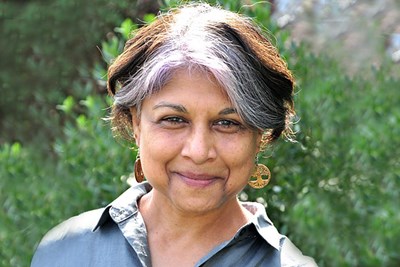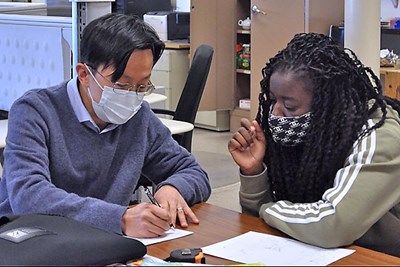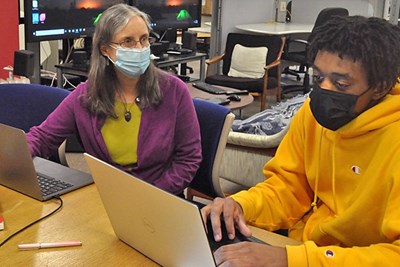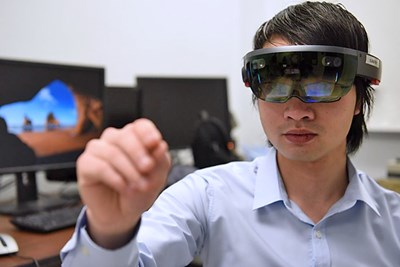Researchers Develop Innovative Approaches to Graduate Education and Workforce Training
Initiatives are supported by $463k in grants from the National Science Foundation

A team of researchers headed by Electrical and Computer Engineering Prof. Kavitha Chandra is developing interdisciplinary programs that target graduate education and future workforce training in using digital technologies for automotive and manufacturing industries. The initiatives are supported by two grants totaling nearly $463,000 from the National Science Foundation (NSF).
“Future work in science and engineering fields demands that learners acquire not only strong disciplinary knowledge, but also design skills and systems-thinking skills that can be adapted and applied to solving emerging, complex problems in society,” says Chandra, who is the associate dean for undergraduate programs at the Francis College of Engineering.
“At the same time, this need also opens opportunities for women and students of color, traditionally underrepresented in science and engineering, to explore a broader range of research and career pathways that better identify with their interests and values,” she says.

The first grant, worth nearly $363,000 over three years, will fund a project called “Graduate Education in Cyber-Physical Systems Engineering.” It aims to help engineering students acquire the needed skill sets by training them to co-create, alongside faculty and professionals from industry, online educational modules on cyber-physical systems and life-cycle management. The modules are designed to be integrated into existing undergraduate and graduate courses to make students aware of emerging research problems and careers in these fields. The modules will be not only accessible to students in different disciplines, but they would identify how students can contribute to their respective fields and integrate the business need of working effectively across disciplines.
Aside from Chandra, the other team members include Prof. Charles Thompson of Electrical and Computer Engineering, Prof. TzuYang Yu of Civil and Environmental Engineering, and Assoc. Teaching Prof. Susan Thomson Tripathy of Sociology. The project is conducted in collaboration with UMass Dartmouth, the University of the District of Columbia and North Carolina A&T State University.

The team is using the funds to pilot, test and validate its educational model with co-created modules, which is applicable across a wide range of industries, including service, manufacturing, health care, transportation, automation and environmental monitoring with smart sensor networks.
“Our project is unique because it involves graduate students learning how to co-create the curriculums’ technical content with faculty and industry experts. We hope this would make the curriculums more inclusive in engaging and educating a diverse student body,” says Chandra.
In the next phase, the modules will be integrated into engineering courses offered at UMass Lowell and the three other collaborating institutions. The researchers will then assess how the students learned and acquired skills from the modules, and how these approaches can be applied to the broader community.
The second NSF award is a planning grant that supports the team’s project, called “Participatory Design Process for Co-Creating Augmented Reality-Based Education and Training Systems.” Its goal is to explore the role of artificial intelligence-assisted augmented reality (AR) systems in strengthening STEM education, improving intergenerational communications and sharing knowledge across disciplines.
One of the NSF-supported projects explores the role of artificial intelligence-assisted augmented reality systems in strengthening STEM education. Shown here is Bach Xuan Tran, a recent Ph.D. graduate from the University of Akron, which is one of UML’s collaborators.

The one-year, $100,000 project is a collaboration between UMass Lowell, the University of Akron and Ohio State University. UML’s share in the award is $40,000. Joining Chandra in the study are Thompson and Tripathy as co-principal investigators.
According to Chandra, adult learners in the workforce already have strong design and production skills in their profession, but they need support to transfer their work skills to new fields.
“AR technology is already being used in education and training activities,” she says. “Our study will use commercial AR devices and explore the systems and foundations that are necessary to fully harness the AR’s capabilities.”
The researchers have assembled a team of educators, subject-matter experts and socio-technical systems engineers to design content and workflow processes that would integrate AR content into workforce training, engineering labs and courses, and to assess how users adapt and learn with this technology.
They hope the new capabilities would enable students to explore research problems and course material in an immersive environment, as well as to provide training, orientation and support for new employees whose work involve machinery, healthcare and rehabilitation, and medical devices and services.
“Given that the half-life of new skills is about two years and more than 42% of workers are expected to be in jobs that require new skills in two years, the availability of such programs will enable workers to move from one field to another with relative ease,” says Chandra.